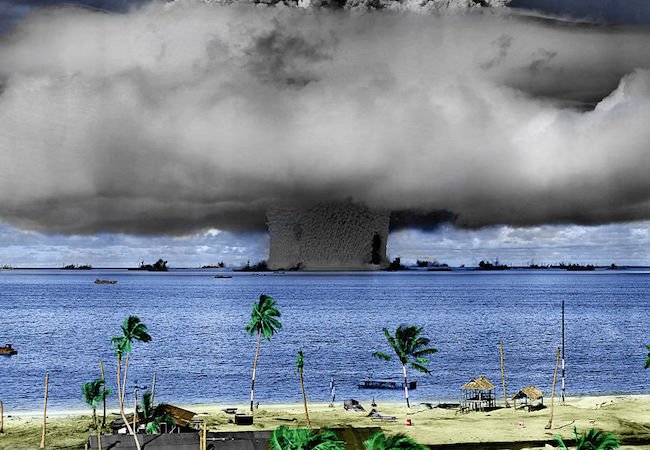
By Sadia Kazmi
The Non Proliferation Treaty (NPT) that opened for signature in 1968 and entered into force in March 1970 ideally aims at keeping a check on the spread as well as acquisition of nuclear weapons. However this pronounced intention seemingly is to keep an eye on the non-nuclear weapon states only. Either for the possible chances of them developing nuclear weapons or acquiring the nuclear weapons from the nuclear weapon states. This is essentially a character of horizontal proliferation, around which the very focus of the treaty revolves. However such an approach is seen as inherently discriminatory as well as limited in the scope. Therefore the treaty has been subjected to criticism on many occasions especially by the states that are not signatory to it. They easily make their case strong by pointing out its weaknesses and loopholes.
The very fact that it only puts check on the non-nuclear weapons states, makes it partial and biased, while the five “recognized” nuclear weapon states are exempted from such scrutiny. This also does not take into account the vertical proliferation of the nuclear weapons and technology, hence is not a very effective arrangement when it comes to stopping arms race among the states, an objective that is outlined in its preamble.
Also, even though the treaty supports the peaceful use of nuclear technology, it doesn’t really have any framework to ascertain that the states who posses it, will only be employing to for peaceful purposes. At the same time it highlights the division of the world into two nuclear blocks as nuclear haves and nuclear have-nots. The NPT unnecessarily gives the five nuclear haves a privileged position where they can keep their nuclear stockpiles and demands the have-nots to remove and forego their quest to acquire nuclear weapons. This is the very reason why Pakistan strongly opposes the joining of this treaty. This particular dimension has added to the security dilemma, invoking the urge among non-nuclear weapon states to acquire weapons for their security and safety, hence eventually adding to the arms race. This comes in direct clash with another clause in its preamble which stresses upon the cessation of the manufacturing of nuclear weapons. Hence one can see the inherent flaw in this treaty where the very right of the states to secure their sovereignty is highly undermined. The realities of the internal political world don’t seem to have been given any space in this treaty rendering it unrealistic.
It is also believed that the NPT is being used as a tool by the five recognized nuclear weapons states to put restrictions on others for the development and acquisition of these weapons, while they themselves have been allowed to continue to develop on their own stockpiles. This again is highly discriminatory and explicitly biased. Another point is about its cutoff date, which as per this treaty is identified as 1st January 1967. So any state, according to the provisions of NPT, which resorted to the development or acquisition of nuclear weapons after this cutoff date, has technically done so in violation of this treaty. In other words, this treaty takes away the right from the states to be considered as the recognized nuclear weapon states if they acquired nuclear weapons after this cutoff date and should instead be liquidating their nuclear assets. This is why as per NPT there are only five recognized nuclear weapon states while the other four are not even recognized as the nuclear weapon state despite the fact that they possess nuclear weapons. So the issue of legitimacy of states that posses nuclear weapons, needs to be reviewed. This also puts these states under pressure to opt for disarmament and roll back their nuclear weapon programs. However the withdrawal clause of this treaty simultaneously makes the NPT an intrinsically weak document which on one hand makes it obligatory for the states to refrain from developing and acquiring the nuclear weapons but on the other hand it allows the signatories to withdraw in case the treaty is somehow jeopardizing their supreme interest.
All these loopholes and intentionally biased approaches of NPT call for the revision and amendment of its provisions. The same has been demanded by many nuclear and non nuclear weapon states as well. Another aspect that glaringly makes it outdated is that it still reflects the Western centric approach where the US and European powers are maneuvering the world matters, however it largely ignores the fact that the world focus is now increasingly shifting to Asia, predominantly towards East and South Asia. This naturally demands the treaty to be updates as per the latest trends of the international political environment.
A treaty like NPT can only be successful if it truly stands and deliver on its commitment to disarmament and condemnation of arms race. If it continues to bank upon its discriminatory policies, the ideals of a peaceful world free from arms race will remain a distant possibility.




